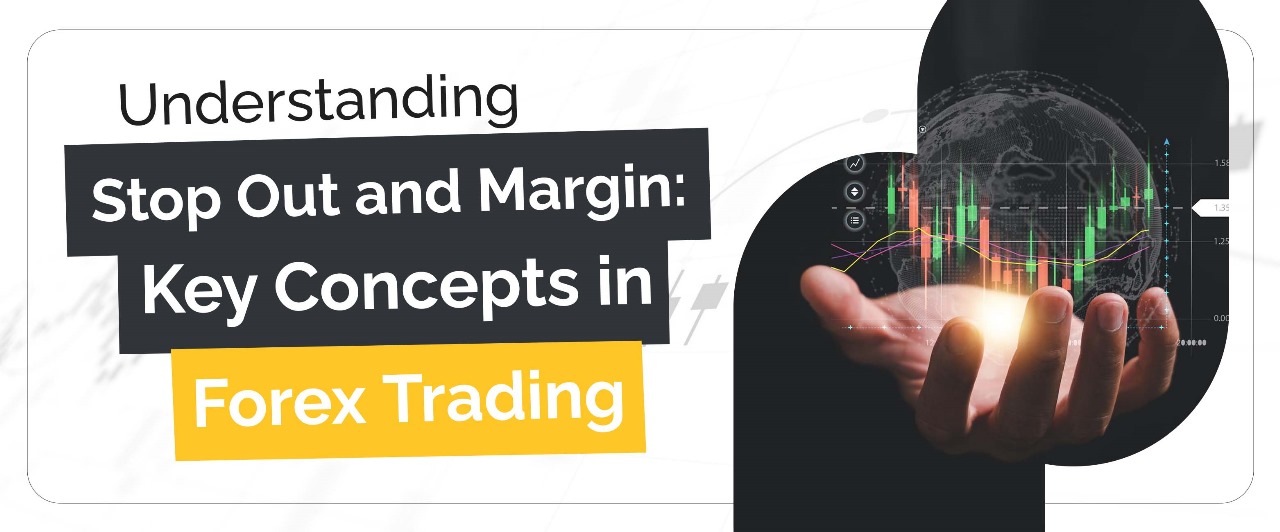Yamarkets • 2023-12-07

In the ever-changing world of Forex, two key concepts hold immense roles. Step Out and Margin. As you navigate the intricate landscape of currency exchange, understanding these terms becomes crucial. Let's break down these concepts into bit-sized pieces, equipping you with the knowledge to make informed decisions to start your Forex trading journey with confidence.
In this article, we will explore the concept of Margin Level, stop out, Margin Calculation and gross margin percentage to make things simpler.
What is the Margin in Forex?
In Forex trading, margin refers to the deposit required by your broker to open and maintain a leveraged position.
Margin acts as a collateral or security deposit, enabling traders to enter into larger trades and potentially amplify profits. Margin is essentially the amount of money required to open and maintain a leveraged position. It's like a down payment on a bigger investment, allowing you to control a position larger than your actual account balance.
Let’s try to understand with an example
Imagine you're playing a game with friends, and each player starts with a specific amount of money. You can use your money to make bets, but you can't bet more than you have. In forex trading, you deposit a certain amount of money (your equity), but you can use leverage to open positions worth much more than your deposit. This borrowed money is called a margin.
Let's aim to comprehend this by utilizing a statistical illustration.
Think of it this way:
Margin Level = (Equity / Used Margin) x 100%
For example, if your equity is $1,000 and your used margin is $500, your margin level is 200%. This means you have twice your own money left compared to the borrowed money.
Why use margin?
Amplify potential profits: By controlling a larger position, you can potentially make more money if the market moves in your favour.
Trade with less capital: You don't need to have the full amount of the position value in your account, making forex trading accessible even with limited funds.
Increase trading flexibility: You can open more positions simultaneously, diversifying your portfolio and exploring various opportunities.
However, margin also comes with risks. If the market moves against you, your losses can be amplified, potentially exceeding your initial margin deposit.
Margin Call: A Margin Call is a warning from your broker that your margin level is low and you need to deposit more money or close some positions to avoid a stop-out.
Now let’s understand the concept of Stop Out
Stop out: In Forex trading, a stop-out is when your broker automatically closes all or some of your open positions because your margin level has fallen below a specific threshold set by the broker.
Stop out: In Forex trading, a stop-out is when your broker automatically closes all or some of your open positions because your margin level has fallen below a specific threshold set by the broker.
Example 1:
You have an account balance of $10,000.
You open a long position on EUR/USD with a leverage of 100:1. This means you only need $100 of your capital to control a position worth $10,000.
Your broker's stop-out level is 50%.
EUR/USD starts moving against your position, and your equity (account balance) falls to $5,500.
Your used margin is still $10,000 because leverage remains unchanged.
Your margin level becomes 55% (5,500 / 10,000 * 100).
As your margin level is still above the 50% threshold, your position remains open.
Example 2:
The EUR/USD price continues to decline, and your equity drops to $4,500.
Your margin level falls to 45% (4,500 / 10,000 * 100).
Now, your margin level falls below the 50% threshold, triggering the stop-out.
Your broker automatically closes your EUR/USD position at the current market price.
Why is stop-out Important?
Protect yourself: Stop Out prevents you from losing more money than you deposited.
Maintain market stability: If everyone starts losing uncontrollably, it could affect the entire market.
Manage your risks: You can avoid stop-outs by monitoring your margin level and closing positions when necessary.
Let’s understand the Margin Calculation and gross margin percentage in detail
Margin Calculation: Margin calculation in forex involves determining the amount of money required to open and maintain a trading position. The gross margin, often expressed as a percentage, is a crucial metric in assessing the profitability of a trade. To calculate the margin, one must utilize the following formula:
Margin = (Trade size ×Exchange rate)/Leverage.
Margin calculation in forex involves determining the amount of money required to open and maintain a trading position. The gross margin, often expressed as a percentage, is a crucial metric in assessing the profitability of a trade. To calculate the margin, one must utilize the following formula:
Here, the trade size represents the volume of the position, the exchange rate is the current rate of the currency pair being traded, and leverage is the ratio of the trader's funds to the borrowed funds. The resulting margin value indicates the collateral needed to execute the trade.
On the other hand, the gross margin formula is applied to evaluate the profitability of a trade:
Gross Margin (%) = Profit/ (Trade size × exchange rate)
This formula provides the percentage of the trade size that represents the profit. Traders commonly use gross margin to assess risk and make informed decisions regarding position sizing and leverage. Understanding these calculations is fundamental for effective risk management in the dynamic world of forex trading.
This formula provides the percentage of the trade size that represents the profit. Traders commonly use gross margin to assess risk and make informed decisions regarding position sizing and leverage. Understanding these calculations is fundamental for effective risk management in the dynamic world of forex trading.
Conclusion:
In summary, margin is a fundamental concept in Forex trading, representing the deposit required by brokers to engage in leveraged positions. It acts as collateral, enabling traders to control larger positions than their account balance. Margin allows for amplified profits but also comes with risks, including the potential for increased losses.
Margin levels are crucial, calculated as (Equity / Used Margin) x 100%, indicating the proportion of a trader's funds to borrowed funds. A Margin Call serves as a warning to deposit more money or close positions when the margin level is low.
Stop Out is another essential concept, where brokers automatically close positions if the margin level falls below a predefined threshold, preventing further losses. This risk management measure is vital to protect traders and maintain market stability.
Understanding margin calculation and gross margin percentage is essential for effective risk management. These calculations involve determining the money required to open and maintain positions and assessing trade profitability. Traders use gross margin percentages to make informed decisions on position sizing and leverage, contributing to a more secure and informed approach in the dynamic world of Forex trading.
 AI
AI
